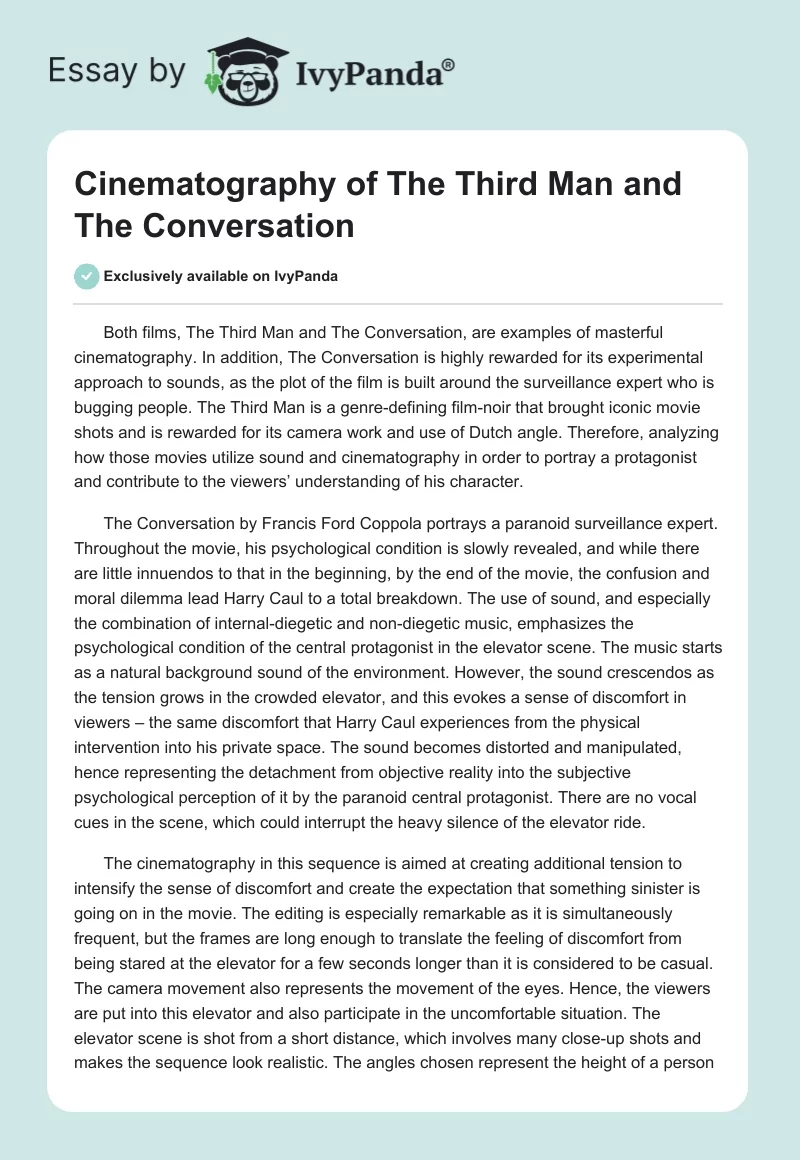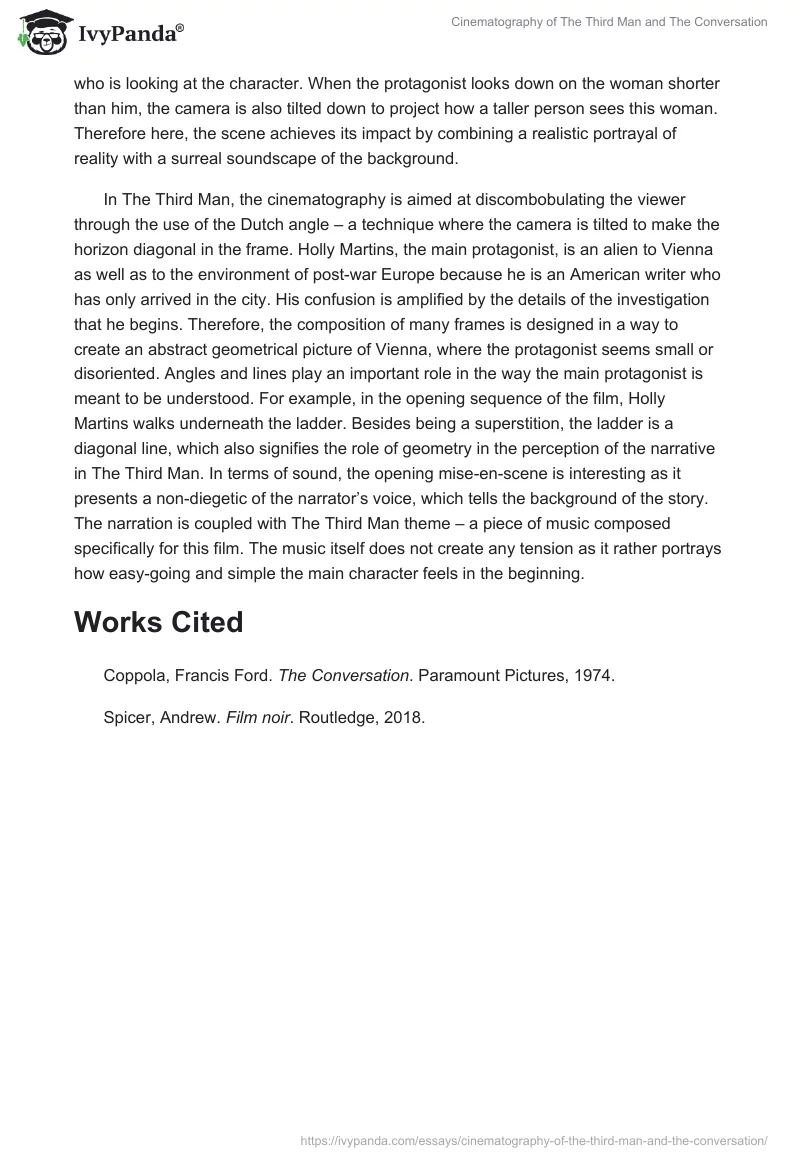Both films, The Third Man and The Conversation, are examples of masterful cinematography. In addition, The Conversation is highly rewarded for its experimental approach to sounds, as the plot of the film is built around the surveillance expert who is bugging people. The Third Man is a genre-defining film-noir that brought iconic movie shots and is rewarded for its camera work and use of Dutch angle. Therefore, analyzing how those movies utilize sound and cinematography in order to portray a protagonist and contribute to the viewers’ understanding of his character.
The Conversation by Francis Ford Coppola portrays a paranoid surveillance expert. Throughout the movie, his psychological condition is slowly revealed, and while there are little innuendos to that in the beginning, by the end of the movie, the confusion and moral dilemma lead Harry Caul to a total breakdown. The use of sound, and especially the combination of internal-diegetic and non-diegetic music, emphasizes the psychological condition of the central protagonist in the elevator scene. The music starts as a natural background sound of the environment. However, the sound crescendos as the tension grows in the crowded elevator, and this evokes a sense of discomfort in viewers – the same discomfort that Harry Caul experiences from the physical intervention into his private space. The sound becomes distorted and manipulated, hence representing the detachment from objective reality into the subjective psychological perception of it by the paranoid central protagonist. There are no vocal cues in the scene, which could interrupt the heavy silence of the elevator ride.
The cinematography in this sequence is aimed at creating additional tension to intensify the sense of discomfort and create the expectation that something sinister is going on in the movie. The editing is especially remarkable as it is simultaneously frequent, but the frames are long enough to translate the feeling of discomfort from being stared at the elevator for a few seconds longer than it is considered to be casual. The camera movement also represents the movement of the eyes. Hence, the viewers are put into this elevator and also participate in the uncomfortable situation. The elevator scene is shot from a short distance, which involves many close-up shots and makes the sequence look realistic. The angles chosen represent the height of a person who is looking at the character. When the protagonist looks down on the woman shorter than him, the camera is also tilted down to project how a taller person sees this woman. Therefore here, the scene achieves its impact by combining a realistic portrayal of reality with a surreal soundscape of the background.
In The Third Man, the cinematography is aimed at discombobulating the viewer through the use of the Dutch angle – a technique where the camera is tilted to make the horizon diagonal in the frame. Holly Martins, the main protagonist, is an alien to Vienna as well as to the environment of post-war Europe because he is an American writer who has only arrived in the city. His confusion is amplified by the details of the investigation that he begins. Therefore, the composition of many frames is designed in a way to create an abstract geometrical picture of Vienna, where the protagonist seems small or disoriented. Angles and lines play an important role in the way the main protagonist is meant to be understood. For example, in the opening sequence of the film, Holly Martins walks underneath the ladder. Besides being a superstition, the ladder is a diagonal line, which also signifies the role of geometry in the perception of the narrative in The Third Man. In terms of sound, the opening mise-en-scene is interesting as it presents a non-diegetic of the narrator’s voice, which tells the background of the story. The narration is coupled with The Third Man theme – a piece of music composed specifically for this film. The music itself does not create any tension as it rather portrays how easy-going and simple the main character feels in the beginning.
Works Cited
Coppola, Francis Ford. The Conversation. Paramount Pictures, 1974.
Spicer, Andrew. Film noir. Routledge, 2018.


